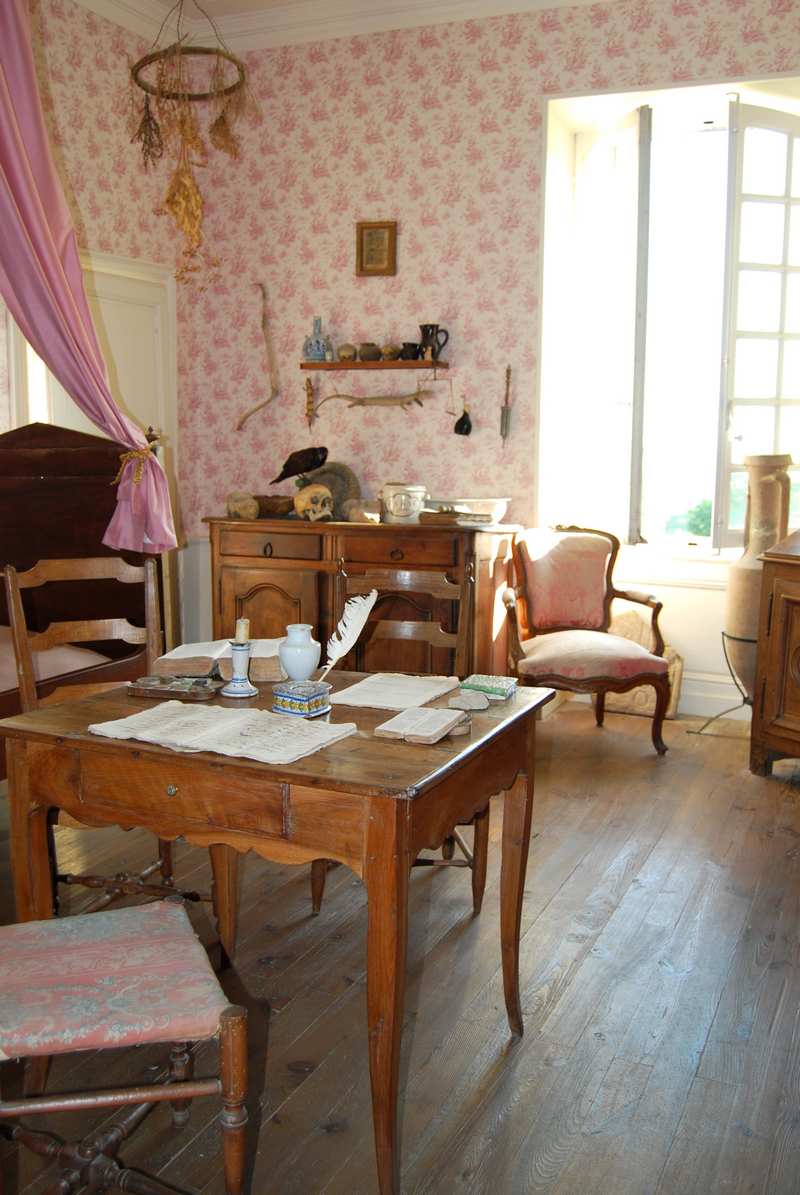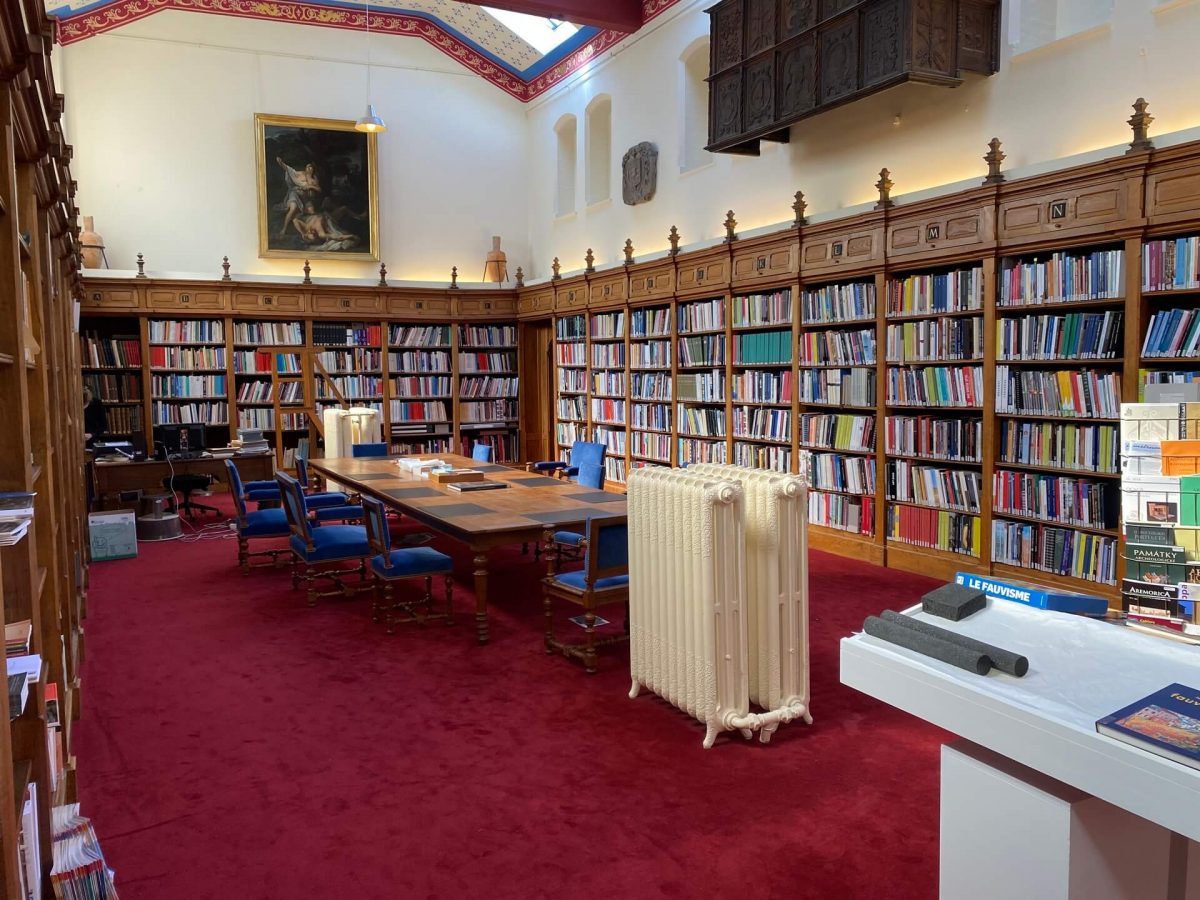Published 18 / 05 / 2022 Reading time: 5 min
The name "Musée de France" designates museums approved by the State and particularly "any permanent collection made up of goods whose conservation and presentation are of public interest and organized with a view to knowledge, education and pleasure. public ". More than 1200 museums in France benefit from
this name today.
The Alice Taverne museum
- Place : the museum occupies a former mansion, a bourgeois building acquired by Alice Taverne in 1950. From the 1930s, Alice developed a passion for ethnography. She collects testimonies, beliefs, but also objects, reflections of their time.
- Collections : through the different rooms of the house, the life of the Roanne and Foréz countryside is written. The soul of Alice Taverne still seems to float in this universe patiently built over collections. Here the grocery store, there the inn, the classroom where you could almost smell the smell of chalk and even the mysterious corner of the bonesetter. An intimate and sometimes surprising dive into the life of yesteryear.
- The visit continues : continue in the pretty park that surrounds the museum and offers a view of the plain of Roanne. We come to picnic, stroll or simply meditate after an inspiring visit to the museum.
![Musée de France : Alice taverne à Ambierle dans la Loire]()
© Alice Tavern Museum ![Musée de France : Alice taverne à Ambierle dans la Loire]()
© Aurelie Leonard
The Silk Museum
- Place : next to the Hospital Museum, the Silk Museum is also housed in the former Hôtel-Dieu. A space dedicated to highlighting the silk craftsmen, creators of these vaporous and delicate fabrics for a century and a half.
- Visit : the warm shades of threads and fabrics mingle with the wood of the looms. One can imagine the regular noise of the machines once in operation. We dream of this enchanting dress that we would have liked to wear. Part of the exhibition also pays homage to the last Corporation of Weavers operating in France: that of Charlieu.
- Heart stroke : the demonstrations of hand looms, witnesses in themselves of the incredible know-how of the craftsmen of Charlieu.
![Musée de France Démonstration au musée de la Soirerie]()
Demonstration at the Silk Museum © Roannais Tourisme ![Musée de France, musée de la soierie de Charlieu]()
© Roannais Tourism ![Musée de France, musée de la soierie de Charlieu]()
© Roannais Tourism
The Hospital museum
- Place : the Hôtel-Dieu de Charlieu closed its doors in 1981. If the sick are no longer there, the building of the XVIIIe century has retained its medical atmosphere by transforming itself into a Hospital Museum.
- To have : a visit to the museum promises some striking images. We remain pensive in front of the large room where the beds covered with white sheets are lined up. In the apothecary, the wooden furniture and the collection of earthenware pots with blue decoration catch the eye, as much as the large gilded wooden altar in the chapel.
- What is this smell? We believe it. A specialized laboratory reconstructed the smells in the different rooms of the museum. The scent of plants adds to the charm of the apothecary, the scents of lavender perfume the lingerie… the journey continues!
![Musée hospitalier de Charlieu]()
Charlieu Hospital Museum © Madame Oreille / RT ![Musée de France, musée hospitalier de Charlieu]()
© Roannais Tourism
The Joseph Déchelette Museum
- Place : After having been housed in the former Convent of the Capuchins then in the attic of the Hôtel de Ville on the initiative of the regional archaeologist Fleury Mulsant, the museum is now housed in an elegant XNUMXth century private mansion.e century, acquired by the archaeologist Joseph Déchelette in 1892. The beautiful building will then be bequeathed to the city to install the museum.
- Collections : Notice to the curious eclectic, the Déchelette museum offers encyclopedic collections brought together by Fleury Mulsant and Joseph Déchelette: archaeology, painting, sculpture and openness in particular to non-Western arts. The collections of natural history, graphic arts, textiles and contemporary ceramics are about to leave the reserves! The perfect opportunity to treat yourself to a melting pot of colors, materials, volumes or several thematic parentheses according to your desires.
- The story : the library and its decorations were restored in 2012 by Richard Mongenet from pictures taken by Joseph Déchelette himself... In figures, this restoration involves 105 m² to paint, 9 days of work for the ceiling with 700 small crosses to be reproduced one by one, 6 days of work for the 44 m of frieze… The museum library keeps all the archives of Joseph Déchelette. This research center is also a lending library specializing in art, archaeology, decorative arts, etc.
- Heart stroke : “The Sunday visit”: every first Sunday of the month, the museum is free. As a bonus, two guided tours are free, at 15 p.m. and 16:30 p.m.
![La bibliothéque du musée Joseph Déchelette]()
The library of the Joseph Déchelette museum © Musée Joseph Déchelette ![Exposition au musée Joseph Déchelette]()
Exhibition at the Joseph Déchelette museum © Gil Lebois / ADT42 ![Musée de France, musée joseph Déchelette à Roanne dans la Loire]()
© Frederic Rizzi

















